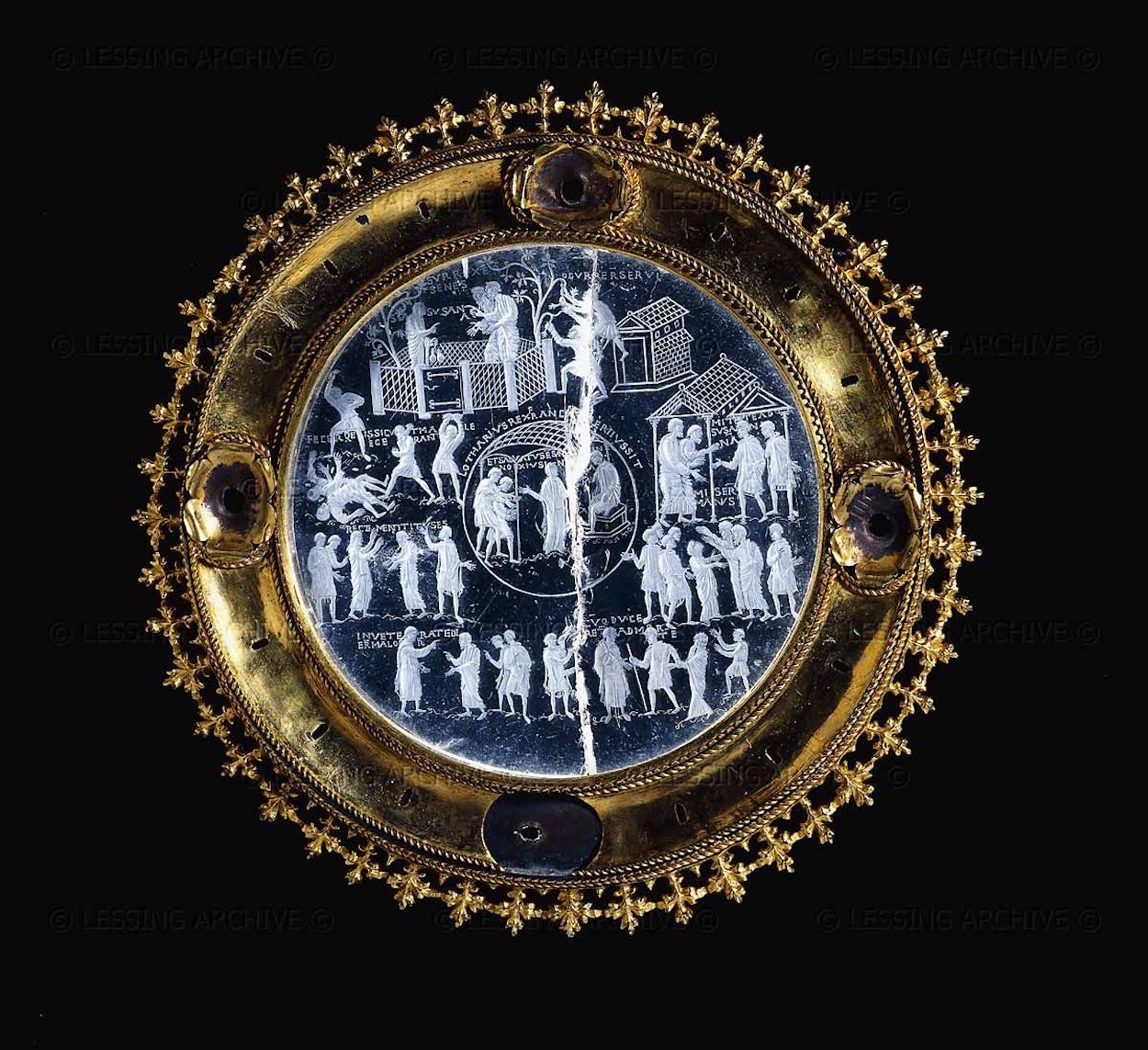In 855, the former Carolingian Empire was in a sorry state. Far from the magnificent territory ruled by the famous Charlemagne (r. 768-814), the Treaty of Verdun divided the realm into three separate kingdoms, each ruled by one of Charlemagne’s grandsons. This arrangement further fragmented when one of these kingdoms, the Central Frankish Realm, was divided between King Lothar’s three sons upon his death in 855. Lothar II received Middle Francia, also known as Lotharingia, the forerunner, in part, of modern-day Lorraine. Although King Lothar II was primarily focused on his many quarrels with his other royal family members, he found the time to commission this crystal before his death in 869. It depicts the story of Susanna as told in the Apocrypha,.
Although the frame of this piece was added in the 15th century, and the prominent crack may have been the result of the object’s abuse during the French Revolution, the crystal’s carvings, depicting eight separate scenes, are remarkably clear and vividly detailed. The crystal references King Lothar II in an inscription on the piece, although it isn’t clear why Susanna’s story might have resonated with him. It is certainly possible that King Lothar II wished to stress his role as a just judge in his realm, and the subject matter follows this pattern. Another, perhaps more intriguing, possibility involves King Lothar II’s wife, Teutberga. Teutberga could not bear children, and King Lothar II went to great lengths to acquire an annulment of their marriage as a result. The crystal’s focus on the virtuous and misjudged Susanna might have been an attempt made by King Lothar II’s enemies or Teutberga’s supporters to encourage the king to accept his blameless, if barren, wife. Whatever the case, the crystal is an amazing example of ninth-century carving in what is a somewhat unusual, and often temperamental, medium.
- Stephanie Skenyon
DailyArt is also severing an extra dose of art on Instagram. Please join us.:)


 Unknown Artist
Unknown Artist